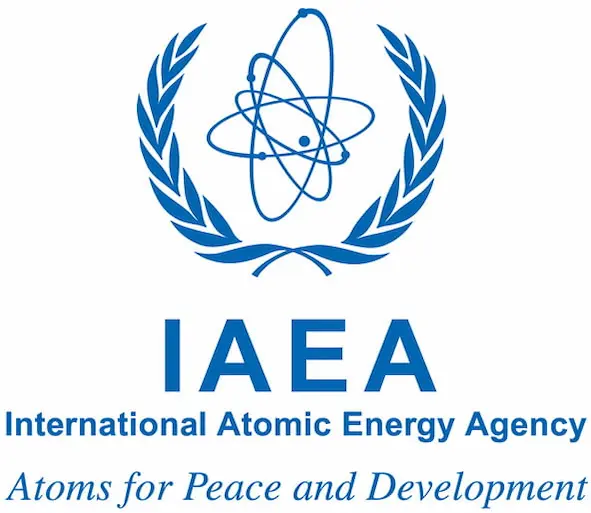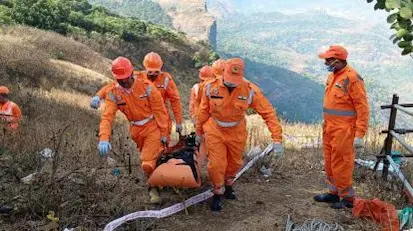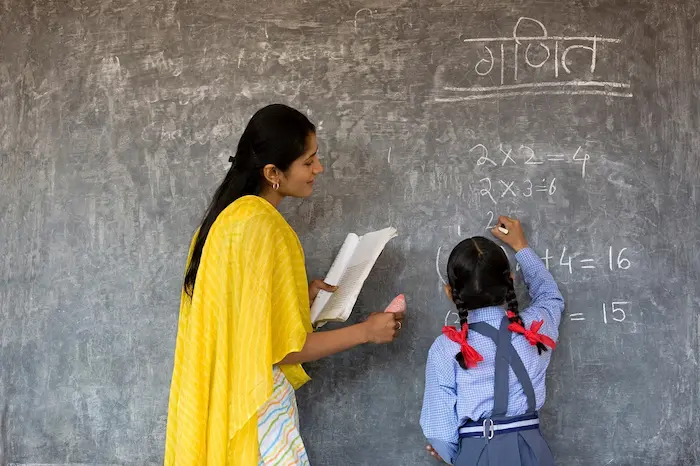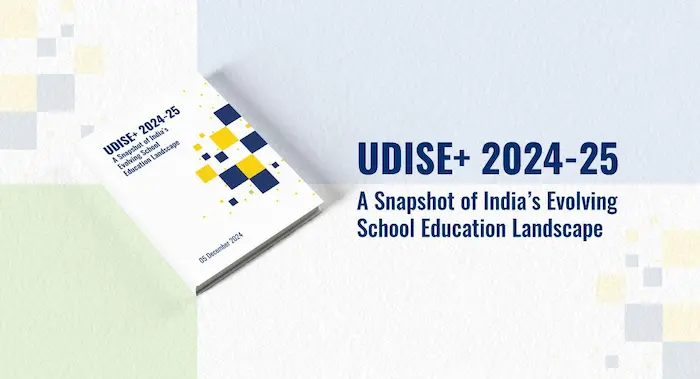1. What are Prairies? – Environment

Why In News
Recent initiatives — including the launch of a new global prairie ecosystem database — aim to enhance the comprehensive restoration and conservation of prairies, focusing on their ecological and climatic significance.
What are Prairies?
Definition:
Prairies are temperate grassland ecosystems, primarily found in North America, especially in the USA and Canada. They are characterized by flat or gently rolling terrain and grassy vegetation with limited tree cover.
Geographic & Climatic Features:
- Occur in semi-arid temperate zones.
- Receive low annual precipitation.
- Maintained by natural disturbances like grazing, fire, drought, and low temperatures.
Vegetation Characteristics:
- Dominated by grasses, but also include lichens, mosses, forbs, and shrubs.
- Adaptations include:
- Deep root systems for accessing underground moisture.
- Narrow leaves to minimize water loss.
- Silica-rich tough tissues for mechanical strength and drought resistance.
- Wind-pollinated small flowers, arranged in dense heads.
Wildlife Adaptations:
Prairie fauna is specially adapted to open, windy, and dry environments, including:
- Large mammals: Elk, deer
- Predators: Coyotes, bobcats
- Burrowing species: Badgers, ground squirrels, pocket gophers
- Hoppers: Jackrabbits
Global Comparisons:
Temperate grasslands around the world are known by different names:
- Pampas – South America
- Velds – Africa
- Steppes – Asia
Why Are Prairies Important?
- Among the most productive and biodiverse ecosystems globally.
- Play a crucial role in carbon sequestration, soil conservation, and climate resilience.
- Act as critical habitats for endangered grassland species.
Recent Initiative in News:
- A new global database on prairie ecosystems launched by conservation scientists.
- Aimed at:
- Tracking ecosystem degradation and restoration efforts
- Supporting conservation planning and climate mitigation strategies
Exam Connect – Possible Questions
Prelims
1. Which of the following ecosystems is correctly matched with its corresponding region?
A. Pampas – North America
B. Velds – South America
C. Prairies – North America
D. Steppes – Africa
Answer: C. Prairies – North America
2. Consider the following characteristics:
1.Vegetation dominated by grasses
2. Adapted to low precipitation and fire
3. Wildlife includes bobcats and badgers
4.Found in tropical rainforest zones
Which of the above are characteristics of prairies?
A. 1, 2 and 3 only
B. 2, 3 and 4 only
C. 1, 3 and 4 only
D. All of the above
Answer: A. 1, 2 and 3 only
Mains
1. Discuss the ecological importance of temperate grasslands such as prairies in the context of climate change and biodiversity conservation.
2. Compare and contrast the prairies of North America with other temperate grasslands across the globe. Highlight the challenges associated with their conservation.
2. India–Japan Relationship: Strategic Overview – International Relation

Why in News?
Prime Minister Narendra Modi will visit Japan on August 29–30, 2025, for the 15th India–Japan Annual Summit, marking his first bilateral summit with Japanese PM Shigeru Ishiba. This will be PM Modi’s eighth visit to Japan, but his first annual summit since 2018.Following this, he will attend the Shanghai Cooperation Organisation (SCO) Summit in Tianjin, China.
Evolution of India–Japan Relations
| Year | Milestone |
|---|---|
| 1958 | Japan becomes India’s largest Official Development Assistance (ODA) partner |
| 2000 | Relationship upgraded to Global Partnership |
| 2014 | Further elevated to Special Strategic and Global Partnership |
Key Pillars of India–Japan Relations
1. Strategic & Defence Cooperation
- Joint Declaration on Security Cooperation (2008)
- Joint Military Exercises:
- Malabar (with US, Australia)
- JIMEX (Japan-India Maritime Exercise)
- 2+2 Dialogue at the Defence and Foreign Minister levels.
2. Indo-Pacific Cooperation
- India’s Act East Policy and Indo-Pacific Oceans Initiative align with Japan’s Free and Open Indo-Pacific (FOIP) vision.
- Focus areas: Maritime security, infrastructure development, connectivity.
3. Multilateral Engagement
- Cooperation in forums like:
- QUAD (India, Japan, US, Australia)
- International Solar Alliance (ISA)
- Supply Chain Resilience Initiative (SCRI)
- G20, G7, SCO
4. Trade & Investment
- Bilateral Trade: $22.8 billion (2023–24)
- Japan = Major FDI source for India
- Sectors: automobiles, electronics, infrastructure, start-ups
5. Development Cooperation
- Japan has been India’s top ODA donor since 1958
- Major projects:
- Mumbai–Ahmedabad High-Speed Rail (Bullet Train Project)
- Delhi Metro, Dedicated Freight Corridors, Sewerage projects in smart cities
6. Cultural & People-to-People Exchanges
- Year of Tourism Exchange (2023–24)
- Growing academic collaboration, youth exchanges, and Buddhist cultural links
Significance of the Relationship
- Acts as a counterbalance to China in the Indo-Pacific
- Enhances India’s strategic autonomy
- Promotes infrastructure and technology transfer
- Encourages rules-based international order
Exam Connect – Possible Questions
Prelims
1. Consider the following statements regarding the India–Japan relationship:
1. Japan has been India’s largest FDI contributor since 1958.
2. The Malabar exercise is a trilateral naval exercise involving India, Japan, and the US.
3. India and Japan are members of the International Solar Alliance.
Which of the above statements is/are correct?
A. 1 and 2 only
B. 2 and 3 only
C. 1 and 3 only
D. 1, 2, and 3
Answer: B. 2 and 3 only
(Statement 1 is incorrect – Japan has been the largest ODA donor, not FDI contributor.)
2. The “Special Strategic and Global Partnership” refers to India’s bilateral relationship with:
A. USA
B. Australia
C. Japan
D. South Korea
Answer: C. Japan
Mains
1. Critically examine the evolving contours of the India–Japan relationship in the context of the Indo-Pacific region. How does this partnership align with India’s strategic interests?
2. Discuss the role of Japan in India’s development through its ODA assistance. Evaluate the significance of major infrastructure projects undertaken with Japanese support.
3. International Atomic Energy Agency (IAEA) – International Relation

Why in News?
The Director-General of the IAEA confirmed the return of inspectors to Iran, signaling ongoing international monitoring of Iran’s nuclear activities amidst global concerns over the potential militarization of nuclear energy.
About the IAEA
| Feature | Description |
|---|---|
| Full Form | International Atomic Energy Agency |
| Established | Statute approved: October 23, 1956; Effective: July 29, 1957 |
| Headquarters | Vienna, Austria |
| Autonomy | Independent body within the UN system |
| Reports To | UN General Assembly and UN Security Council |
| Members | 180 countries (as of 2025) |
Institutional Structure
- General Conference:
All member states meet annually to set major policy directions and approve budgets. - Board of Governors (35 members):
Meets ~5 times a year to:- Supervise safeguards agreements
- Appoint the Director General
- Secretariat:
Headed by the Director General, manages daily operations and implementation of agency programs.
Functions of the IAEA
- Ensuring peaceful use of nuclear energy.
- Preventing nuclear proliferation.
- Enforcing comprehensive safeguards:
- On-site inspections
- Monitoring nuclear facilities
- Satellite surveillance & information analysis
- Providing technical assistance in:
- Nuclear medicine
- Agriculture
- Power generation
Significance of the IAEA
- Acts as the global nuclear watchdog
- Instrumental in monitoring compliance with NPT (Non-Proliferation Treaty)
- Key role in dispute resolution and confidence-building among nations
Prelims
1. Where is the headquarters of the International Atomic Energy Agency (IAEA) located?
A. Geneva
B. Vienna
C. Brussels
D. New York
Answer: B. Vienna
2. The IAEA reports to:
A. UN Human Rights Council
B. International Court of Justice
C. UN General Assembly and UN Security Council
D. UN Economic and Social Council
Answer: C. UN General Assembly and UN Security Council
Mains
1. Discuss the role of the International Atomic Energy Agency (IAEA) in promoting nuclear non-proliferation and peaceful use of nuclear technology. How does its mandate align with global security concerns?
4. Challenges of Monsoon Variability and Disaster Preparedness – Environment

Why in News?
In August 2025, North India witnessed extreme monsoon-driven floods:
- Himachal Pradesh became isolated due to road and bridge damage.
- Over 40 deaths in Jammu and Kashmir.
- Punjab’s farmland submerged.
- Yamuna River in Delhi swelled beyond danger levels.
These events underscore the increasing unpredictability of the Indian monsoon, exposing serious governance and disaster preparedness gaps.
Key Challenges of Monsoon Variability
1. Erratic Rainfall Patterns
- Shifting trend: From long-duration moderate rain to short, intense rainfall events.
- Leads to flash floods, landslides, and riverbank erosion, especially in hill states like HP.
- Overburdens urban drainage and rural catchments.
2. Environmental Fragility of the Himalayas
- Deforestation, slope destabilization, and unsafe construction amplify risk.
- Inappropriate engineering techniques (e.g., over-concreting, hill-cutting) worsen landslide vulnerability.
3. Inadequate Disaster Preparedness
- Forecasting tools have improved (e.g., Doppler radars), but:
- Ground-level alert dissemination is weak.
- Community preparedness (e.g., drills, evacuation protocols) is minimal.
- Over-dependence on post-disaster response instead of proactive planning.
4. Policy & Governance Gaps
- Unplanned infrastructure development in eco-sensitive zones.
- Weak implementation of existing norms like:
- Eco-sensitive zone regulations
- Building codes for hilly regions
- Lack of inter-agency coordination during emergencies.
Need for a Paradigm Shift
| From | To |
|---|---|
| Post-disaster relief | Pre-disaster risk reduction |
| Reactive governance | Anticipatory planning |
| Infrastructure-led growth | Sustainability-led resilience |
Recommended Measures
Strengthen Early Warning Systems
- Integrate real-time weather forecasting with district-level alert systems.
- Use SMS alerts, community radios, and local apps.
Infrastructure Resilience
- Mandate landslide zonation maps for all infrastructure planning.
- Promote nature-based solutions like green cover restoration and wetland preservation.
Community Engagement
- Conduct mock drills, training for Panchayati Raj Institutions (PRIs).
- Establish disaster volunteers and local task forces.
Policy Reforms
- Enforce Environmental Impact Assessments (EIA) for all hill projects.
- Strengthen State Disaster Management Authorities (SDMAs) with budget autonomy.
Exam Connect – Possible Questions
Prelims
1. Which of the following factors contribute to increased landslide risk in the Himalayan region?
1.Deforestation
2. Intense rainfall bursts
3. Urbanization on slopes
4. Silting of rivers
A. 1, 2 and 3 only
B. 2, 3 and 4 only
C. 1, 2 and 4 only
D. All of the above
Answer: D. All of the above
2. The Sendai Framework for Disaster Risk Reduction emphasizes:
A. Post-disaster relief only
B. Military-led disaster recovery
C. Proactive risk reduction and resilience
D. Economic development over environmental safety
Answer: C. Proactive risk reduction and resilience
Mains
1. The increasing unpredictability of the Indian monsoon has serious implications for disaster management in the Himalayan region. Analyze the key challenges and suggest policy interventions for building climate resilience in hill states like Himachal Pradesh.
2. Discuss how unplanned infrastructure development exacerbates the vulnerability of ecologically sensitive regions during extreme weather events. Support your answer with recent examples.
5. India’s School Enrolment Declines Amid Falling Birth Rates & Demographic Shifts – Indian Society

Why in News?
As per UDISE+ data (2024–25) from the Ministry of Education, India’s school enrolment has dropped by 25 lakh students, continuing a three-year downward trend.
This marks the lowest enrolment across Classes 1–12 since 2018–19, highlighting deeper demographic and social changes.
Key Findings from the UDISE+ Report
| Factor | Description |
|---|---|
| Total Enrolment | Declined by 25 lakh in 2024–25 |
| Government Schools | Witnessed a drop in student numbers |
| Private Schools | Showed growth, especially in early education (nurseries, prep) |
| Lowest Enrolment Since | 2018–19 |
Contributing Factors
1. Falling Birth Rates
- TFR (Total Fertility Rate): 1.91 (NFHS-5, 2021)
- Below replacement level (2.1), leading to a smaller cohort of primary school-age children.
- This trend aligns with a broader demographic transition — India is aging.
2. Methodology Changes in UDISE+
- Adoption of student-level data tracking (vs. earlier aggregate-based models).
- Eliminated duplicates, providing more accurate but lower enrolment figures.
3. Migration & Urbanisation
- Parents in urban areas often prefer private pre-primary schools, many of which are not captured in official datasets.
- Migration causes disruptions in school continuity, affecting rural and government school enrolment.
Implications of Enrolment Decline
Positive Shift
- Indicates a demographic dividend period closing → more attention needed on quality education.
- Opportunity to reduce student–teacher ratios, improve learning outcomes.
Challenges
- Falling enrolment may affect resource allocation to schools (especially rural govt. schools).
- Risk of policy misalignment if planning continues based on older demographic assumptions.
Policy Takeaways
- Shift Focus: Quantity ➝ Quality
- Invest in teacher training, infrastructure, and learning assessment.
- Strengthen Government Schools
- Make them competitive with private schools in terms of learning, digital access, and facilities.
- Tailor Education Policy to Demographic Realities
- Future planning should account for ageing populations, shrinking student cohorts, and urban shift.
- Upcoming Census 2026
- Will offer granular demographic data to refine educational strategies.
Exam Connect – Possible Questions
Prelims
1. Which of the following statements is/are correct?
1.India’s Total Fertility Rate is currently above the replacement level.
2. UDISE+ collects individual-level student data to avoid duplication.
3. Migration has no effect on school enrolment numbers.
A. 1 and 2 only
B. 2 only
C. 2 and 3 only
D. 1 and 3 only
Answer: B. 2 only
(TFR is below replacement level; migration does impact enrolment.)
2. The recent decline in school enrolment in India can be attributed to:
A. Rising fertility rates
B. Increased dropout rates only
C. Declining birth rates and demographic shifts
D. Government policy banning private schooling
Answer: C. Declining birth rates and demographic shifts
Mains
1. The decline in school enrolment across India reflects a larger demographic and societal shift. Discuss the implications of this trend for the education system and policy planning in India.
2. How do demographic transitions affect educational planning and social development? Examine in the context of India’s declining fertility rates.
6. UDISE+ Report 2025: Key Insights into India’s Education Landscape – Indian Society

Why in News?
The Ministry of Education has released the latest data from the Unified District Information System for Education Plus (UDISE+), highlighting positive trends in teacher strength, gender representation, and student retention across India.
What is UDISE+?
| Aspect | Description |
|---|---|
| Full Form | Unified District Information System for Education Plus |
| Launched | 2018–19 (upgrade of UDISE launched in 2012–13) |
| Managed By | Department of School Education & Literacy, MoE |
| Purpose | Collects school-level data across India to monitor: |
- Enrolment
- Dropout rates
- Teacher demographics
- Infrastructure
- Gender indicators |
Key Highlights of UDISE+ Report 2025
1.Teacher Statistics
- Over 1 crore teachers in India (6.7% increase from last year)
- Positive implications for pupil–teacher ratio and classroom quality
2. Dropout & Retention
- Significant reduction in dropout rates across elementary and secondary levels
- Suggests improved school participation and retention
3. Gender Representation
- Girls’ enrolment: 48.3% of total students
- Female teachers: 54.2% of total teaching staff
- Indicates greater gender parity in education both as learners and educators
4. Digital Infrastructure
- 64.7% of schools have computer access
- 63.5% have internet connectivity
- Reflects progress in digital education readiness, aligned with NEP 2020
Significance of the Report
- UDISE+ enables evidence-based policymaking for both central and state governments
- Supports planning for infrastructure upgrades, teacher recruitment, and gender-inclusive education
- Plays a key role in monitoring progress under:
- Samagra Shiksha Abhiyan
- National Education Policy (NEP) 2020
Exam Connect – Possible Questions
Prelims
1. Consider the following statements about UDISE+:
1.It was launched in 2012–13.
2.It collects school-level data on enrolment, infrastructure, and gender parity.
3. The system is managed by the Ministry of Home Affairs.
Which of the above statements is/are correct?
1. A. 1 and 2 only\
2. B. 2 only
3. C. 1 and 3 only
4. D. 1, 2 and 3
Answer: B. 2 only
(Statement 1 refers to UDISE, not UDISE+; statement 3 is incorrect.)
2. According to UDISE+ 2025, which of the following statements is true?
A. Female teachers now make up over half of India’s teaching workforce.
B. The dropout rate has increased in secondary education.
C. Less than 50% of schools have internet access.
D. There is a decline in computer access in schools compared to 2022.
Answer: A. Female teachers now make up over half of India’s teaching workforce.
Mains
1. The UDISE+ 2025 report reflects a data-driven shift in India’s education policy. Discuss how real-time data systems like UDISE+ can help improve educational outcomes in India.
2. Examine the role of gender indicators in assessing educational progress in India. How do trends in female enrolment and teaching staff affect broader societal transformation?

